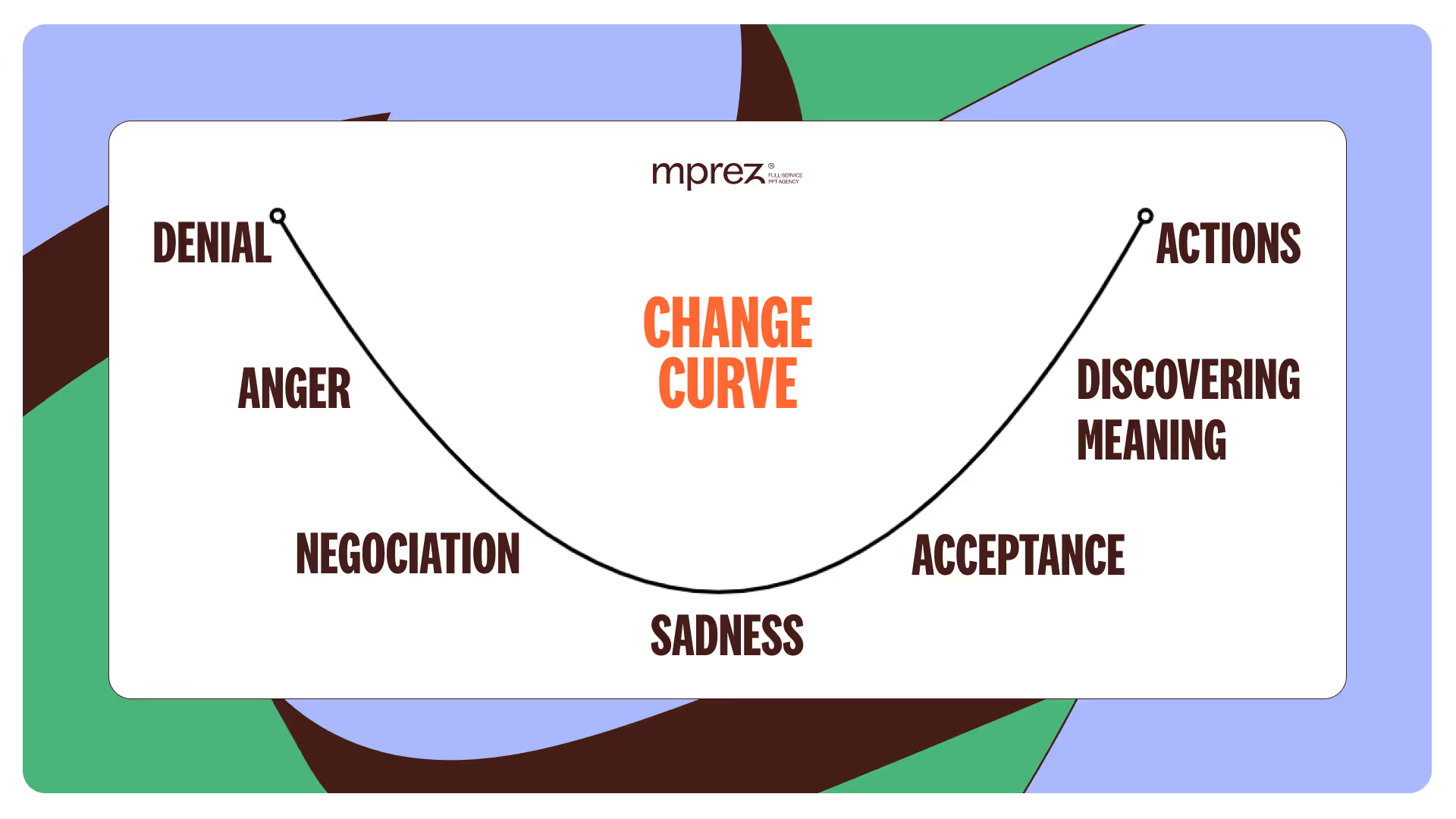Boost your internal communication
Find out how to boost your internal communication!

How to boost your internal communication: strategies and effective solutions
Internal communication is an indispensable pillar for the success of modern businesses. Crucial both for team management and for the motivation of employees and the consolidation of corporate culture, it deserves particular attention.
“Businesses realized that they had a social body that needed to be treated well, nourished, fed, even pampered a little bit.”, affirms Assaël Adary in our article about challenges and trends in internal communication.
In this article, we reveal concrete and effective strategies to revitalize internal communication within your organization, and thus strengthen the commitment and cohesion of your teams.
The importance of internal communication
Strengthening corporate culture
Effective communication is fundamental to solidifying corporate culture. It makes it possible to align company values with the actions of employees and to create a sense of belonging and collective commitment. Corporate culture refers to the set of values, beliefs, behaviors and norms that characterize an organization. It defines how employees interact internally and externally, and is a factor in their motivation, engagement, and performance. A strong corporate culture contributes to the overall success of the company, which is why it is important during all stages of a company's life.
Since corporate culture is what brings its employees together, internal communication plays a predominant role. Through transparent and honest communication, a group can have a positive influence on it. By promoting both bottom-up and top-down communication, employees are more engaged and motivated.
Employee engagement
Communication plays a big role in motivating and engaging employees. Clear and inspiring messages encourage employees to be more involved in their missions. A study conducted by Gallup in 2022 reveals that businesses with effective communication are 50% more likely to have high levels of employee engagement. On the other hand, an employee who is well informed and listened to feels valued, which reinforces their sense of belonging to the company.
In addition, two-way (up-down) communication is essential. Employees should not only receive information, but also have the opportunity to provide feedback and ideas. Real-time feedback platforms, like digital idea boxes or regular surveys, can be very useful. Finally, public recognition and thanks for employee efforts and achievements can dramatically increase employee engagement and motivation, reducing absenteeism and turnover.
“There is no better employer brand than an employee who, just with honesty and sincerity, describes and explains his job, both what is going well and what also involves elements of difficulty, etc.”, assures Assaël Adary.
Productivity improvement
By facilitating collaboration and information sharing, internal communication acts as a powerful lever to improve team productivity and the competitiveness of your business. It reduces information silos and promotes better coordination. According to a McKinsey study, effective communication can increase employee productivity by 20 to 25%.
Collaborative tools such as Microsoft Teams, Slack, or Trello allow teams to work together more fluidly and effectively, thus boosting collective performance. By centralizing information and facilitating access to the necessary resources, these tools minimize time losses and errors due to misunderstandings. Additionally, regular, well-structured meetings ensure that all team members are aligned with goals and priorities, leading to faster and more accurate task completion.

Reducing conflicts
Good communication helps prevent and resolve conflicts by promoting listening and mutual understanding. It helps create a harmonious work environment where everyone feels heard and respected. Workplace conflicts can often be attributed to misunderstandings or a lack of communication, so by establishing clear and open communication channels, businesses can reduce these misunderstandings and prevent tensions.
Mediation sessions, conflict resolution workshops, and non-violent communication training can be set up to help employees deal with disputes constructively. Additionally, encouraging a culture of regular feedback allows employees to voice their concerns before they develop into major conflicts. An environment where open discussions are encouraged builds trust and collaboration, reducing friction and tension.
Assessment of the current state of internal communication
Communication audit
To boost internal communication, it is essential to start by evaluating its current effectiveness. A communication audit helps identify strengths and areas for improvement by trying to understand how messages are perceived by employees and identify areas in need of change. Communication auditing generally involves the collection of data through surveys, interviews, and document analyses, followed by a detailed assessment and recommendations to optimize internal communication. It can be carried out by the HR team or by the group's communication team; they will be responsible for collecting all the useful information and reporting it to the management.
Employee surveys and feedback
As mentioned earlier, employees can be a reliable and important source of feedback, thanks to their field vision and the narration of their daily lives. Internal surveys and feedback make it possible to understand the perceptions and expectations of teams, to detect system shortcomings and to define improvement objectives.
Showing that you are interested in their perceptions is a guarantee of employer brand and successful internal communication - provided, of course, that you apply the necessary changes in case of problems - and allows you to keep your teams motivated and engaged, because they know that they are listened to and understood. In addition, putting surveys in place makes it possible to increase the feeling of belonging and to put development and well-being at work at the center of concerns.
Analysis of existing channels
To perfect continuous improvement, it is now necessary to analyze existing communication channels. How do you promote the values of the company, your ethical and sustainable aspirations; how do you strengthen group cohesion and the integrity of the company, etc. A review of the communication tools and platforms used helps to identify the most effective channels and those that require adjustments, for perfect internal communication. Thus, it is important to check that you are using both physical and digital channels. Indeed, digital transformation is now an integral part of societies and, with the advent of remote working, it is essential to be able to maintain effective internal communication despite changes in workplaces.
Physical communication channels can be team meetings, billboards, billboards, idea boxes, internal newsletters, etc., while digital channels will be emails, the intranet, collaborative platforms (Slack, Trello, Teams...), mobile applications, etc.
Note that some physical channels, such as the idea box or the internal newsletter, can be digitized to facilitate their use by everyone.
Strategies to boost internal communication
Use of technology
The integration of modern digital tools can significantly improve internal communication. Here are a few options to consider:
- Collaborative platforms : You can use tools like Slack, Microsoft Teams, or Trello to promote real-time communication and collaboration between teams. They are generally easy to set up and at low cost.
- Interactive Intranet : Setting up an engaging intranet centralizes internal communications and facilitates access to essential information. Generally, it is a solution popular with large groups that need to communicate large amounts of information to their teams or who need to keep track of changes and positions addressed.
- Mobile applications : If you feel like a startup or want to make your service/business more digital and technological, you can opt for mobile applications in order to make information accessible to employees on the go or working remotely, thus improving connectivity and engagement. The disadvantage of this solution is that it requires time and investment, as well as specific technical and technological capabilities and knowledge.
- Digital idea boxes : Traditional idea boxes are often overlooked nowadays, so you can change this way of doing things by creating online spaces where employees can submit their ideas and suggestions. You can thus go through dedicated organizations, such as Steeple, Jenparle, Beeshake or Leppa.
- Real-time surveys and feedback : We talked about this previously, but looking for solutions from employees is a lasting solution that can allow you to put your finger on many problems. To simplify this information collection, you can use digital survey tools, such as Pastel, Supermood, UserReport, or Ruttl.
- Videos and webinars : Instead of some meetings, switch to videos and webinars; your employees will be able to review them whenever they want and gain autonomy and efficiency. You can organize video sessions or webinars to share important updates in a more engaging way, using Loom, Teams, Google Meet, or Zoom.
- Electronic newsletters : Instead of keeping an internal company journal, send regular email newsletters to keep employees informed of company news and developments. You can use Brevo (formerly Sendinblue) if you want to create specific layouts, or simply a classic email loop.
- Internal social networks : To encourage interactions and the sharing of information between employees in a relaxed atmosphere, you can set up corporate social networks such as Slack, Chatter (a corporate social network integrated with Salesforce) or even the Facebook Workplace.

Creating a culture of open communication
For internal communication to work, it needs to be open and honest.
Encourage feedback
We've said it over and over again, but knowing how to listen to feedback is essential in business. Employees need to be able to express themselves freely, even anonymously, on sensitive topics - through anonymous idea boxes, for example - and management must respond to their concerns transparently.
Transparent meetings
Holding regular meetings to discuss goals, progress, and challenges encourages transparency and the active participation of all team members. These meetings should be structured to allow everyone to express themselves and ask questions. Sharing the minutes of these meetings with all team members is also important to maintain a high level of transparency and honesty.
Communicative leadership
The role of managers
Managers are the local communicators of all departments and can be trained to become effective communication relays. Their role is to disseminate clear and inspiring information within teams, and to create social thinking around teamwork. They contribute to sharing the values of the company and to developing the feeling of belonging and team spirit in each employee. Their management must be accessible and caring to promote non-violent and permanent communication.
Training sessions
To improve the communication skills of team leaders, you can organize specific workshops and training courses to strengthen their ability to engage and motivate their employees. These training courses can be internal or external, during team buildings or more stringent events, but must in all cases meet the value of commitment and help them unite employees and build a base of lasting rituals.
Tools and techniques for measuring the impact of internal communication
Key Performance Indicators (KPIs)
Key performance indicators (KPIs) are metrics used to assess the effectiveness of internal communication initiatives. Here are some examples of commonly used KPIs and their practical application:
- Participation rate in internal investigations : This KPI measures the percentage of employees who participate in internal surveys. A high participation rate indicates that employees are concerned with the questions asked and are committed to the communication processes.
- Internal newsletter opening rate : This KPI tracks the number of employees who open and read newsletters sent by the company. A high open rate suggests that the content is relevant and engaging for employees.
- Internal communications response time : This KPI measures the average time employees take to respond to internal messages. A short response time may indicate smooth and effective communication.
- Attendance rates for meetings and webinars : This KPI assesses employee participation in meetings and webinars organized by the company. High attendance can reflect employee interest and commitment to the topics being discussed.

Employee satisfaction surveys
Employee satisfaction surveys are a valuable tool for measuring employee engagement and satisfaction with internal communication efforts. Here's how to set them up and use them effectively:
1- Survey design
Create a survey that covers various aspects of internal communication, such as the clarity of messages, the frequency of communications, the channels used, and the accessibility of information. Use multiple choice questions, Likert scales, and free text boxes to gather qualitative and quantitative responses.
2- Sample questions :
- “On a scale of 1 to 5, how would you rate the clarity of internal communications?”
- “What communication channels do you find most effective?”
- “Do you have suggestions for improving internal communication?”
3- Analysis of the results
Compile and analyze responses to identify trends and areas for improvement. For example, if a majority of employees find the emails too frequent, but the newsletters interesting, you could adjust the frequency of sending.
4- Corrective actions : Use the results to implement corrective actions. For example, if employees want more transparency, you can organize regular briefings to share important updates.
Engagement analysis
Tracking employee engagement on internal and external platforms (LinkedIn, Instagram, Facebook, etc.) offers valuable insights to assess the effectiveness of communications. Here are some methods and examples of implementation:
- Analysis of interactions on collaborative platforms and external : On platforms like Slack, Teams, Trello or LinkedIn, track the number of messages, reactions (likes and emojis), and active discussions. For example, if a collaborative channel dedicated to informal discussions is very active, this may indicate good team cohesion.
- Intranet access monitoring : Measure the number of visits and the duration of sessions on the company's intranet. A high visit rate and extended sessions can indicate that employees find the Intranet useful and engaging.
- Participation in surveys and digital idea boxes : Analyze the number of survey responses and the number of suggestions submitted via digital idea boxes. High participation can reflect a work environment where employees feel listened to and valued.
- Engaging on internal social networks : On networks like Workplace on Facebook, follow posts, comments, and shares. For example, a large number of shares of an important message indicates that employees find the information relevant and worthy of being shared widely.
By combining these different analysis methods, you can get an overview of employee engagement and adapt your communication strategies to make them even more effective.
Challenges and solutions for dynamic internal communication
Overcoming resistance to change
The changes are scary. We often think of the change curve as a bereavement curve, the death of a reassuring situation. We go through denial (we still follow the old processes...), anger (we think that this new way of doing things is really nonsense), negotiation (can't we really do it like that anymore?!) , sadness (we regret what we had and how we did it), then comes acceptance (this new process is finally not so bad) and the situation becomes stable again.
Nobody reacts in the same way and managers are there to support each employee in the test of change, to help them take the new tools into their hands and master the processes. Bringing employees from denial to acceptance is a path that can take time, but it is a necessary path to approach serene and dynamic internal communication.
To better manage reticence, it is crucial to understand why some employees may be reluctant to new communication methods. Resistances can come from uncertainty, lack of familiarity with new technology, or concerns about additional workload. Clearly explain the benefits of new communication methods and how they will improve the daily work of employees. Transparent communication helps to reduce fears and misunderstandings. Offer training sessions to help employees become familiar with new technologies and platforms. Make sure they have access to technical support and resources to quickly resolve any issues. Engage employees in the implementation process by soliciting their feedback and allowing them to test new methods before they are fully deployed. It helps them feel valued and involved in the transition. Recognize and reward employees who adopt new communication methods quickly and effectively; by becoming change ambassadors, they can inspire others to do the same. Also, introduce new methods gradually rather than forcing sudden changes. This allows employees to adapt gradually and feel less overwhelmed, and maintain an open channel for ongoing feedback to understand the challenges faced by employees and adjust methods accordingly, showing that you are attentive to their needs and concerns.

Managing cultural differences
Adapting communication for a diverse workforce is critical to ensuring optimal understanding and inclusion, and therefore a better employer brand. This means recognizing the different cultures, languages, and communication styles within the company. An inclusive approach may include cross-cultural training to make employees aware of different perspectives and practices. It is also crucial to translate important communications into the languages spoken by employees and to ensure that the messages are culturally appropriate to avoid misunderstandings. By implementing communication strategies that respect and value diversity, businesses can create a more harmonious, inclusive, and productive work environment.
Teleworking and communication
Maintaining effective communication in a remote work environment is a challenge, but it is possible to overcome it with good practices. The adoption of communication and collaboration tools such as Slack, Microsoft Teams or Zoom can facilitate real-time exchanges and maintain team cohesion. Scheduling regular videoconference meetings allows you to keep in touch, discuss ongoing projects, and strengthen a sense of belonging. Weekly or bi-weekly meetings can help maintain group momentum.
Communicating in a clear and transparent manner is the key to the success of remote working. Employees need to be informed about important decisions, business goals, and potential changes. Using internal newsletters and regular updates can be beneficial, as can setting up feedback channels for employees to share concerns, ideas, and suggestions. Active listening and taking their feedback into account promote a more harmonious work environment.
Teleworking can reduce informal social interactions, so it is important to organize moments of virtual conviviality, such as online coffee breaks or virtual team building activities, to strengthen the bonds between team members. Providing training on the use of digital tools and best communication practices while working from home can help employees adapt and be more effective. Offering technical and emotional support is also important for their well-being.
By implementing these strategies, businesses can improve their internal communication, even in a remote work environment, and maintain the commitment and motivation of their teams.
Conclusion
In conclusion, boosting internal communication is a powerful tool for improving employee engagement and productivity. By adopting modern technological tools, creating a culture of open communication, and training leaders in effective communication practices, businesses can overcome the challenges associated with resistance to change and digital transformations. In addition, as in any communication strategy, the implementation of measurement methods such as KPIs and satisfaction surveys makes it possible to monitor the impact of initiatives and to adjust strategies accordingly. Ultimately, successful internal communication creates a harmonious work environment where every employee feels valued, listened to, and motivated to contribute to the company's success.
sourcing :
Psico-Smart — L’impact de la communication interne sur l’engagement des employés
Sociabble — Gallup: State of the Global Workplace (rapport)
Jamespot — Objectifs & productivité de la communication interne
Talkspirit — Fluidifier sa communication interne grâce à un intranet
Ce qu'il faut retenir
- Integrating modern digital tools like collaboration platforms and mobile applications can significantly improve internal communication.
- Encouraging feedback, organizing transparent meetings, and training leaders in effective communication practices are essential for successful internal communication.
- Using key performance indicators (KPIs) and employee satisfaction surveys makes it possible to monitor the impact of internal communication initiatives and to adjust strategies accordingly.



